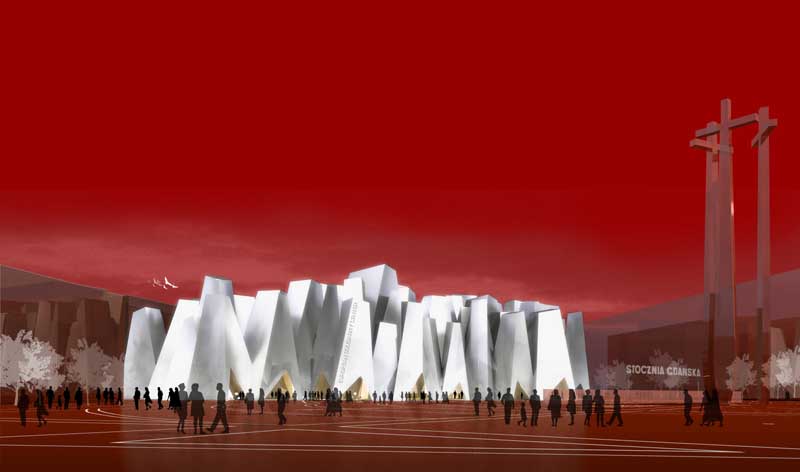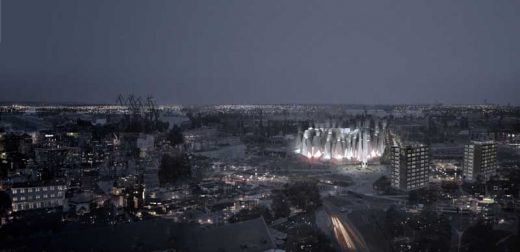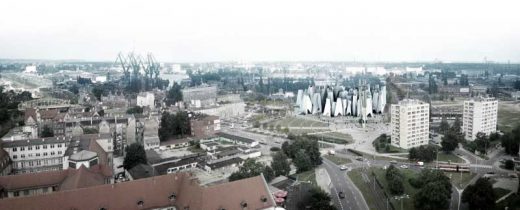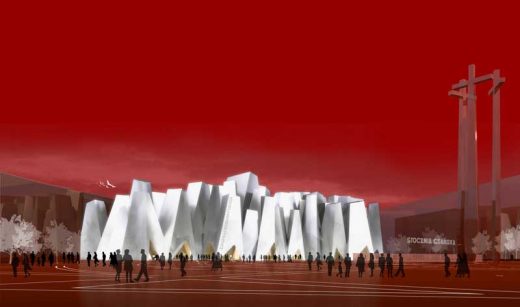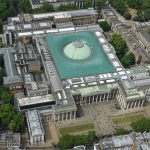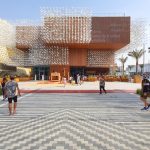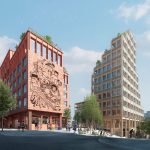European Solidarity Center Building, Gdansk Architecture Images, Polish Design
European Solidarity Center Gdansk
Polish Design Competition: Solidarity Centre Entry, Poland design by Arkitema Architects, DK
29 Feb 2008
Gdansk
Winner: FORT Architects, Poland
Entries: 62
Announced Dec 2007
Prize: £70,000
2nd: Gray International and Stelmach i Partnerzy, Poland
3rd: Arkitema, Denmark
Polish Solidarity Centre Competition
Polish Solidarity Centre Competition Entry by Arkitema
Solidarnosc!
In August and September 1980, the attention of the world was suddenly directed at the Lenin Shipyard in Gdansk. In the course of six dramatic weeks, the workforce at the shipyard managed something that no-one in Soviet-dominated Eastern Europe had achieved before: they obtained the freedom to organise independently of the established political system.
The Communist Party’s monopoly on power was broken – and not by armed force, but by what Vaclav Havel has called “the power of the powerless”, and an alternative came into being: the union Solidarity.
The Solidarity movement was born out of the will of the repressed, and the faith and courage of the Polish people to stand together. The shipyard workers appealed for support – solidarity – from the country’s other workplaces, and received it. Even though the Soviet-faithful government attempted to bribe the shipyard workers with special advantages, these were rejected for the same reason – solidarity.
Solidarity was a sudden spark – an idea which became a movement – and which grew into a cry for the freedom of the Polish people, and thereby for all the people of the Russian-dominated areas in the 1980s.
When large groups of people gather together in mass movements, it can be dangerous and lead to blind faith in destructive leaders. But not with Solidarity, which from the start was a democratic movement based on the equality of its members, and inspired by a common goal that could only be achieved by common action.
We have chosen to concretise this solidarity: to allow architecture to give material form to the human spirit of community which was such an important pre-condition for the creation of the new Poland. The building consists of a number of volumes which, while they may be unremarkable individually, when placed together – shoulder to shoulder – acquire both power and expression. The building volumes seek support in each other, and together create an impression of great strength and expressiveness.
The building is centred on the winter garden and the foyer, according to the same principles which govern the building exterior.
Through the building’s lack of direction, we both emphasise the universal dynamics of the Solidarity movement and embrace the complex dynamics of the square in front of the building and the planned Road to Freedom. The building thus acquires the character of reflective and dynamic recollection rather than that of a static monument.
Just as the main figure – the many building bodies – represent Solidarity, so the facade cladding, in a concrete sense, gives material form to its origins in the movement. All of the facades take the form of polished steel surfaces. Steel, as a symbol, points back to the shipyard and its many workers.
Three entrances open up the building to its surroundings and lead visitors into the great hall. The hall is centred on the winter garden, which will become the hub of the building. The sky and the many sculptural steel surfaces are visible through the winter garden’s impressive glass roof.
In the galleries at the top of the building, the sculptural forms of the individual building bodies can be appreciated as they gently conduct light down to the exhibition area, creating beautiful spatial variation in the sequence of galleries. The individual rooms can be varied in innumerable combinations, thanks to the moveable partition walls.
A visit to the building reaches its climax and conclusion at the Tower of Freedom. From here, the shipyard’s tangled contour of masts and cranes can be seen to the north, while to the south lies the bell tower of St Mary’s Church and the impressive skyline of the old town, framed in the foreground by the monument for the fallen: a view which unites and tells the story of Gdansk, Poland and Solidarity.
Solidarity Center Competition – Building Info from Arkitema 290208
Polish Solidarity Centre Competition 3rd place design : Arkitema
European Solidarity Center : more details
Location: Gdansk, Poland
New Polish Architecture
Contemporary Polish Architecture
Polish Architecture Designs – chronological list
Warsaw Architecture Walking Tours by e-architect
Polish Architect Offices
Polish Architecture Walking Tours
Polish Architecture – Selection
Museum of Contemporary Art in Wroclaw
Design: Holzer Kobler Architekturen
Museum of Contemporary Art Wroclaw : Architecture Competition
Lilium Tower, Warsaw
Design: Zaha Hadid Architects
Lilium Tower
Polish Solidarity Centre Competition Entry by Zvi Hecker Architekt
Polish Solidarity Centre Competition entry : Town Planning Design & Architecture
VÈLO7 Cycle Shop, Poznan
Architects: mode:lina
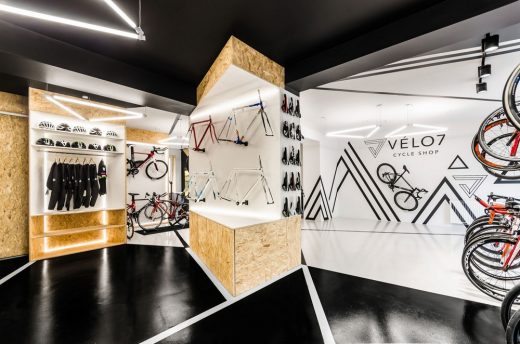
photograph : Patryk Lewinski
Cycle Shop in Poznan
European Solidarity Center : main page
Comments / photos for the European Solidarity Center Gdansk design by Arkitema Architects Denmark page welcome

